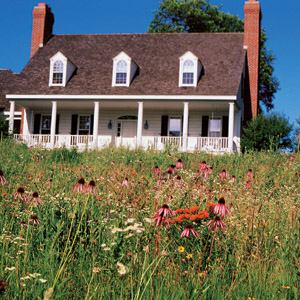My Cart: 0 item(s)
Understanding Soil Moisture
The types of wildflowers and native grasses that grow in natural meadows are determined by a number of factors including the setting of the site and the type of soil but the depth of the water table is the dominant component. Understanding how water behaves on your property is very important in determining which species will grow best on your site. In general, wet meadows require water table depths of less than one foot (30 cm); mesic (or moderate) meadows require just under two feet (55 cm) and dry meadows about 4 feet (120 cm). Observe the area where you are planning your future meadow to grow. Are there areas where water pools or are there areas that seem to be constantly dry no matter how much rain you get? If you have sandy soil, it will likely be dry with the water table being quite deep. The large particles in sandy soil allow water to drain vertically with ease causing the surface of the soil to become quite dry. Soil that is constantly wet could be the result of two circumstances: either you have heavy clay soil that retains moisture for long periods of time or the area is low-lying, closer to the water table and constantly receiving water from areas higher up. When planning for your meadow, knowing how water behaves on your site is essential to making the best choices of which wildflowers to grow. Wildflower Farm offers a variety of seed mixes each designed specifically for different site conditions or if you wish to choose your own species use our Seed Selector tool to select the best species for your property. |

